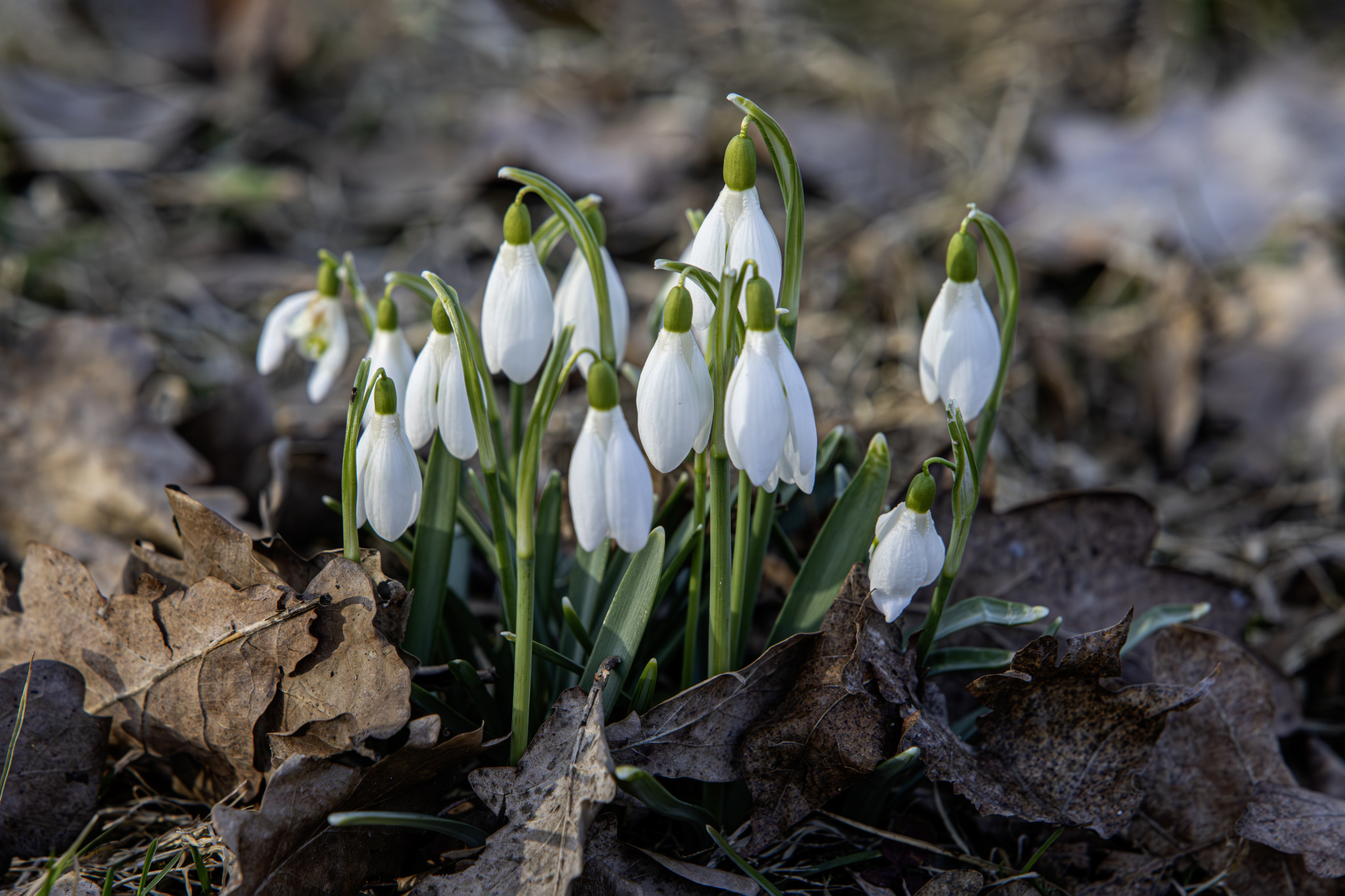The Snowdrop, or Common Snowdrop (Galanthus nivalis), is one of the earliest flowering plants of the year, often blooming while snow still covers the ground. It is a beloved symbol of hope and renewal, marking the transition from winter to spring.
Physical Description
- Height:
- Typically 15–25 cm (6–10 inches).
- Flowers:
- Bell-shaped, pendulous white flowers with three outer tepals (petal-like sepals) and three shorter inner tepals marked with green tips.
- Flowers are mildly fragrant.
- Leaves:
- Narrow, lance-shaped, and blue-green, growing in pairs from the bulb base.
- Bulbs:
- Small, perennial bulbs storing nutrients for the plant’s overwintering and growth.
Habitat
- Grows in various environments, including:
- Woodlands and shaded areas.
- Meadows and riverbanks.
- Parks and gardens, where it is commonly cultivated.
Distribution
- Native to Europe and parts of Western Asia, but widely naturalized in other regions.
- Thrives in temperate climates with moist, well-drained soil and partial shade.
Blooming Season
- Blooms in late winter to early spring (January to March), often breaking through snow or frozen ground.
Reproductive Cycle
- Flowering:
- Self-pollinating but can also attract early pollinators like bees.
- Seed Formation:
- Seeds develop in a capsule that matures as the plant withers.
- Dispersal:
- Seeds are dispersed by ants (myrmecochory), attracted to a fatty appendage on the seeds.
- Propagation:
- Primarily through bulb division in cultivation.
Cultural and Symbolic Significance
- Symbol of Hope and Purity: Associated with the end of winter and the arrival of spring.
- Folklore:
- In many cultures, the snowdrop represents renewal, hope, and protection against evil.
- Often called “the flower of the fair maid” due to its delicate, pure white appearance.
- Celebrated:
- Snowdrop festivals are held in regions where it is a prominent early spring flower.
Ecological Role
- Pollination:
- Provides nectar and pollen to early-emerging pollinators like bees.
- Ground Cover:
- Helps prevent soil erosion in its natural habitats.
Conservation Status
- Least Concern globally but can be threatened locally by habitat loss or overharvesting in the wild.
- Protected under regulations in some countries to prevent overcollection.
Interesting Facts
- Adaptation to Cold:
- Snowdrops can survive subzero temperatures thanks to their hardened flower tissues.
- Medicinal Use:
- Contains galantamine, a compound used in the treatment of Alzheimer’s disease.
- Natural Antifreeze:
- Produces natural compounds to prevent cell damage from freezing temperatures.
Summary
The Snowdrop (Galanthus nivalis) is a resilient and cherished plant, heralding the end of winter with its delicate beauty. Its ecological contributions, cultural significance, and adaptability make it a symbol of renewal and an essential part of temperate ecosystems. Protecting its habitats and promoting responsible cultivation ensure the snowdrop’s place in nature and tradition.
Visited 737 times, 26 visit(s) today
Views: 2492
Subscribe to the newsletter:
